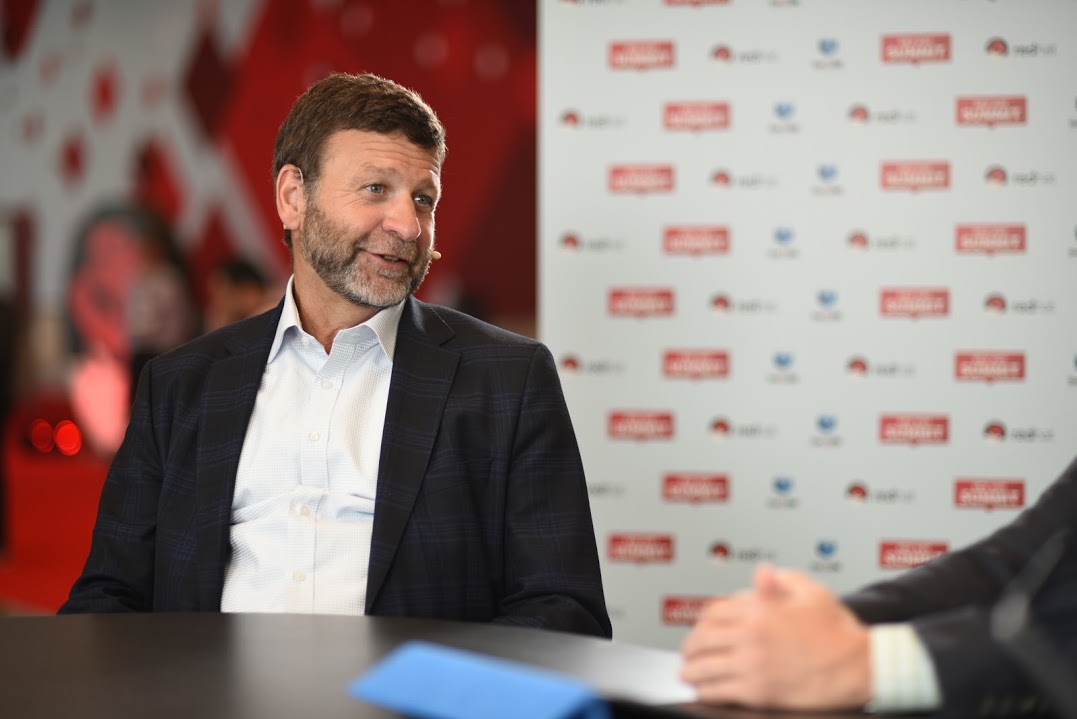 CLOUD
CLOUD
 CLOUD
CLOUD
 CLOUD
CLOUD
In 2001, an executive at Red Hat Inc. who was then in charge of products and technologies for the open-source company urged his chief executive officer to make a big bet on big business with Red Hat Enterprise Linux, or RHEL. Nineteen years and the company’s acquisition for $34 billion later, that executive is now running Red Hat.
In an announcement last week, Paul Cormier (pictured) was named the new CEO and president of Red Hat following the elevation of Jim Whitehurst as president of IBM Corp., the firm that purchased Cormier’s company in 2018.
For Red Hat’s new top executive, it’s an important opportunity to step into the limelight and lead the company and its more than 12,000 employees.
“It’s probably one of the biggest decisions I’ve made in my career to take this new job,” Cormier said. “I’ve been here since our move to the enterprise; I was probably employee number 120 or so.”
Cormier spoke with Stu Miniman, host of theCUBE, SiliconANGLE Media’s livestreaming studio. They discussed Red Hat’s actions to keep its customers running, how company employees have adapted to working from home, the importance of communication, and discussions with colleagues at competing tech firms during the global crisis.
IBM’s purchase of Red Hat remains, after 18 months, the largest software acquisition in history. Red Hat is widely viewed as critical for IBM, as the 109-year-old tech giant makes its big bet on the hybrid cloud.
Cormier’s elevation comes at an unusual time when much of the business world has hit the pause button to deal with the impact of the coronavirus pandemic. In two separate blog posts last week, Red Hat’s new CEO acknowledged the unique circumstances, citing the current crisis as “a time of great uncertainty.”
In recognition of the unusual time, Red Hat has taken a number of actions in recent days. It shifted training classes to virtual and extended the certification exam window by three months. The company has also offered free trials for its Ansible Automation Program to support remote work and released CodeReady Workspaces as a free download for assisting developers who are away from their normal work environments.
“We’ve treated our product line as an enterprise grade product line since day one,” Cormier said. “We’re literally helping our customers keep their businesses running at this point.”
From an internal standpoint, Red Hat’s open-source orientation may offer advantages over other firms that are not used to openly collaborative environments. Many open-source contributors have been working remotely for years.
“The unique part of being 100% open-source focused is that our engineers know the other engineers that are working in our communities,” Cormier noted. “Whether or not they’ve met them face to face, they certainly know them very well on a professional level. A lot of our people are used to working remotely.”
Whether it involves working in an office environment or working from home, communication is still critical, particularly in uncertain times such as these. Red Hat’s quarterly “all-hands” meetings have been moved to once every two weeks, according to Cormier.
In addition, groups within the company have stepped up communications efforts as well.
“My former products group actually had a great idea. They’re holding virtual office hours with their colleagues in the field once a week,” Cormier said. “Product managers and engineers are getting on video conference to talk with the folks out in the field about what we’re doing with products and what’s upcoming. You can’t overcommunicate at a time like this.”
With less traveling and more time at home, tech executives are also reaching out to each other seeking ways to help during the crisis, even if they may be longtime competitors.
“With some of the larger partners, like Microsoft, IBM, Amazon, Google and others, we actually communicate more now that we’re all working from home,” Cormier said. “A lot of us know each other from many years, so that communication is going on. We’re comparing notes.”
As Cormier becomes more comfortable in his new role, he is unlikely to forget the bold moves that launched Red Hat and his own career. As he recalled in an interview posted on the Red Hat blog site last week, when he asked the company’s CEO to go “all in” on RHEL 19 years ago, he sought 90 days to obtain 8,000 subscriptions.
“I told him that if we did 7,999, I would leave the company,” Cormier said. “That’s pretty much putting your job on the line. We did 32,000, by the way.”
Here’s the complete video interview, and stay tuned for SiliconANGLE’s and theCUBE’s coverage of Red Hat Summit Digital, starting April 28, when theCUBE will host a wealth of exclusive interviews, including a deeper dive with Cormier:
THANK YOU